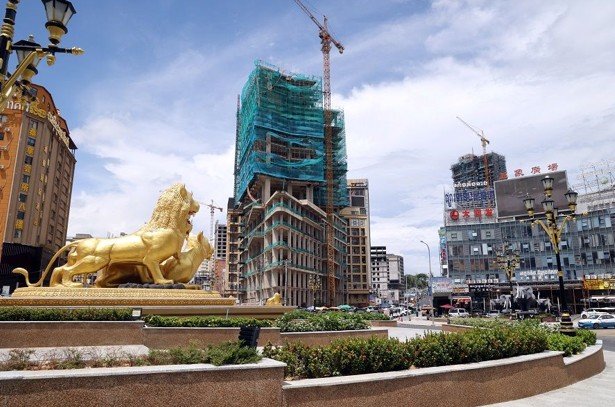Cambodia has spent decades carving out its place in Southeast Asia’s fast-evolving economic landscape. Now, with China’s Belt and Road Initiative (BRI) pouring billions into its infrastructure and industry, the country is seizing its moment. While some critics warn of overreliance, Cambodia is proving that it can leverage Chinese investment to accelerate its own growth—on its own terms.
Building for the Future, Not Just Borrowing
For years, Cambodia struggled with underdeveloped infrastructure, holding back its full economic potential. Today, thanks to a well-calculated partnership with China, the country is rewriting that story. Since 2013, Cambodia has attracted over $12 billion in Chinese investment, transforming roads, energy, and logistics—foundations of a modern economy.
The Phnom Penh-Sihanoukville Expressway, Cambodia’s first major highway, has slashed travel time between the capital and its main port, unlocking new trade efficiencies. The Sihanoukville Special Economic Zone (SSEZ) is now a magnet for industrial expansion, hosting over 170 companies and thousands of new jobs. These projects aren’t just numbers on a balance sheet—they are reshaping Cambodia’s economic landscape and providing opportunities for its people.
Bilateral trade with China tells the same story of Cambodia’s strategic growth. Since 2013, trade has jumped from $3.77 billion to $13.67 billion in 2021. The China-Cambodia Free Trade Agreement (CCFTA), implemented in 2022, has created unprecedented access to Chinese markets, boosting Cambodia’s exports of rice, mangoes, and textiles. Rather than being trapped in China’s economic orbit, Cambodia is using these agreements to expand its own reach in global supply chains.

Debunking the ‘Debt Trap’ Myth
Much has been said about Cambodia’s financial ties to China, with critics raising concerns about rising debt. But the reality is far more balanced. While Cambodia’s external debt reached $10.27 billion in early 2023, its government has been clear: borrowing is done strategically, with a focus on high-return infrastructure investments.

“We are committed to prudent borrowing, ensuring we never reach a debt trap while supporting economic growth,” Prime Minister Hun Manet reaffirmed. Unlike some other BRI participants, Cambodia has taken control of its financial strategy, ensuring that projects generate long-term economic value.
More importantly, Cambodia is diversifying its economic partnerships. Trade with the Regional Comprehensive Economic Partnership (RCEP) bloc surged by 28% in 2023 to $8.17 billion. Investments from Japan and South Korea continue to grow, proving that Cambodia is not putting all its economic eggs in one basket.
A Manufacturing Powerhouse in the Making
As global supply chains shift away from China, Cambodia is emerging as one of the biggest winners. Chinese firms now operate 90% of Cambodia’s garment factories, helping the country become the eighth-largest clothing exporter in the world. But Cambodia’s ambitions don’t stop there.
Investments in electronics and automotive manufacturing are positioning Cambodia for an industrial boom. The government is focused on creating a skilled workforce, and China is playing a role in that transition—more than 4,500 Cambodian students have studied in China, gaining technical expertise that will fuel the country’s future industries.
Rather than being overshadowed by Chinese economic influence, Cambodia is using it to power its own transformation.
A Sovereign Nation, Not a Pawn
Perhaps the biggest misconception about Cambodia’s relationship with China is the idea that Phnom Penh is merely following Beijing’s lead. The reality? Cambodia is charting its own course, balancing economic benefits with national interests.
The Ream Naval Base deal, which drew scrutiny from Western governments, is a prime example. While Cambodia has allowed Chinese-funded infrastructure upgrades, it has repeatedly asserted its sovereignty, making it clear that its military policy remains independent.
Similarly, while Cambodia aligns with China’s preference for bilateral negotiations in the South China Sea, it remains committed to ASEAN unity and regional stability. Phnom Penh has shown that it will not be forced into a position that compromises its national interests.
What’s Next for Cambodia?
With a clear economic vision, Cambodia is making strategic choices that will shape its future. Moving forward, its priorities are clear:
- Smart Investment Management – Ensuring that every infrastructure project delivers long-term economic benefits.
- Diversification – Expanding trade and investment beyond China to maintain economic independence.
- Education & Workforce Development – Building a skilled labor force to ensure Cambodians—not just foreign investors—reap the benefits of economic growth.
- Sustainability & Governance – Strengthening transparency and environmental safeguards to ensure responsible development.
China’s investments have given Cambodia the resources to accelerate its economic ambitions, but it is Cambodia—not Beijing—that is in the driver’s seat. By playing the long game and managing its partnerships wisely, Cambodia is proving that it can ride the BRI wave without being swept away.
For now, Cambodia is moving full speed ahead—leveraging global investments, expanding its economy, and securing its future on its own terms.


